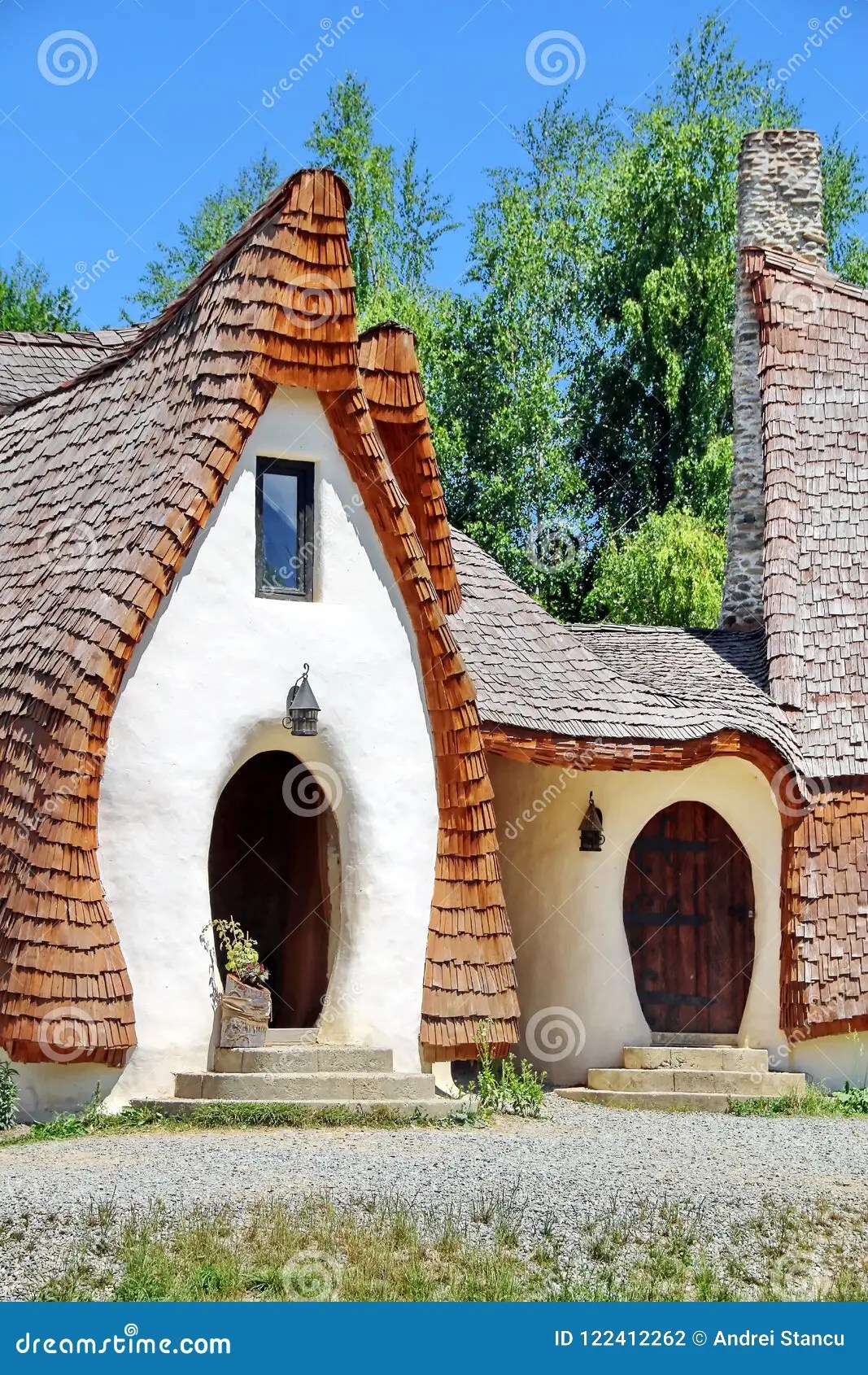Imagine a house crafted from the earth itself, with walls that breathe and a charm that whispers of ancient traditions. Cob houses, built with a simple mixture of clay, sand, and straw, offer a compelling blend of sustainability, affordability, and a unique connection to nature. This comprehensive guide delves into the world of cob construction, exploring its benefits, challenges, and the potential for creating your own earthen paradise.
Discovering the Allure of Cob
Cob houses represent a growing movement towards sustainable and affordable housing. They offer a distinct set of advantages that appeal to environmentally conscious individuals and those seeking a more natural way of life.
Key Advantages of Cob Construction
-
Environmental Harmony: Built with locally sourced, natural materials, cob houses significantly reduce the carbon footprint associated with traditional construction. This eco-friendly approach minimizes environmental impact and promotes sustainable building practices.
-
Budget-Friendly Building: Cob houses can be considerably more affordable to build than conventional homes. The readily available materials and potential for DIY construction make homeownership attainable for a wider range of people.
-
Enduring Strength: A well-maintained cob house can last for centuries, offering exceptional long-term value and a legacy for future generations. This inherent durability makes cob a truly sustainable investment.
Building with Cob: A Step-by-Step Journey
Building a cob house is a hands-on process, blending artistry and practicality. While it requires effort and patience, the process is surprisingly straightforward.
The Cob Construction Process
-
Planning & Preparation: Like any building project, thorough planning is essential. This includes detailed blueprints, obtaining necessary permits, and sourcing materials. Check local building codes as they relate to cob houses as they may vary widely.
-
Site Preparation: Prepare the building site by clearing the land, ensuring proper drainage, and establishing a solid foundation. The foundation is crucial for protecting the cob from moisture. Options include rubble trench, stone, or a more modern approach like earthbags, providing added stability.
-
Mixing the Cob: Cob is a mixture of clay-heavy soil, sand, and straw, combined with water to create a workable, dough-like consistency. The precise proportions depend on the specific soil type. Traditionally, cob is mixed by foot, a process often involving community participation, adding a social element to the building experience.
-
Raising the Walls: Cob walls are built layer by layer, allowing each layer to dry before adding the next. This gradual process allows for design flexibility and creates walls with impressive thermal mass. This thermal mass naturally regulates indoor temperatures, reducing the need for artificial heating and cooling.
-
Adding the Finishing Touches: The final stage involves installing a roof that protects the cob house from the elements. Consider roof options carefully, factoring in local climate and aesthetic preferences. Thatch, green roofs, or conventional roofing materials can be adapted to cob construction. A protective plaster, perhaps using lime or clay, can provide further weatherproofing and add a decorative finish.
Weighing the Pros and Cons
Cob offers a unique blend of benefits but also presents certain challenges. Carefully consider these factors to determine if a cob house is the right choice for you.
| Pros | Cons |
|---|---|
| Environmentally friendly and sustainable | Labor-intensive and time-consuming |
| Affordable to build | Climate-dependent; best in dry climates |
| Extremely durable and long-lasting | Susceptible to water damage if not properly maintained |
| Offers significant design flexibility | Financing and permitting can be challenging |
| Excellent thermal mass, regulates temperature | May require specialized skills or professional guidance |
Is Cob Right for You?
Cob houses provide a compelling alternative to conventional housing, particularly for those seeking sustainable and affordable living. Explore cob houses further and consider if this unique building journey aligns with your vision and lifestyle. If you’re drawn to natural building and embrace the hands-on process, a cob house could be your dream home. Unleash your creativity by incorporating innovative ideas from our chicken house design guide, which emphasizes natural materials and sustainable practices, mirroring the ethos of cob construction.
How Long Will a Cob House Last?
Cob houses, built with earth, sand, and straw, can defy expectations with their remarkable longevity. Some experts even suggest they can potentially last between 500 to 1000 years or even longer, rivaling or even surpassing the lifespan of conventional homes. The durability of these structures is a testament to the strength of cob and its ability to withstand the test of time. Evidence of this longevity can be seen in England, where cob buildings dating back to the 1400s are still standing, and even a structure reportedly 1000 years old offers a glimpse into cob’s enduring potential.
Factors Influencing Cob House Lifespan
Several key factors contribute to the impressive lifespan of a cob house.
-
Water Management: Cob is both hydrophobic (water-repellent) and hydrophilic (water-absorbent). This duality means that while cob can tolerate some moisture, excessive exposure can lead to structural problems. A well-designed roof, proper drainage, and a robust foundation are essential for protecting the cob from water damage. Ongoing research is exploring new techniques and materials for enhancing cob’s water resistance, including specialized plasters and protective coatings.
-
Regular Maintenance: Like any home, a cob house requires regular upkeep. This includes inspecting for and patching cracks, reapplying cob to weathered areas, and addressing any signs of dampness. These simple maintenance tasks can significantly extend the lifespan of a cob structure. The repairability of cob is a major advantage, as repairs can often be made using the same cob mixture used in the original construction.
-
Climate Considerations: Cob houses generally thrive in climates with moderate rainfall and humidity. Regions with heavy downpours, prolonged freezing temperatures, or extreme temperature fluctuations present greater challenges. In these areas, additional protective measures, such as thicker walls, specialized plasters, or a more substantial roof overhang, may be necessary. Consult with experienced cob builders to adapt construction techniques to your specific climate.
Pros and Cons of Cob Construction for Longevity
| Pros | Cons |
|---|---|
| Incredibly Long-lasting | Requires ongoing maintenance |
| Environmentally Friendly and Sustainable | Can be susceptible to water damage if not protected |
| Naturally Insulating | Best suited for specific climates |
| Affordable Building Material | Construction can be time intensive |
The Future of Cob
While rooted in ancient tradition, cob building is not static. Ongoing research explores new ways to improve cob’s performance and adaptability. Scientists are experimenting with different cob mixes, incorporating stabilizing agents, and developing innovative weatherproofing techniques. This research may lead to even more durable and sustainable cob structures, expanding the possibilities of this ancient building method.
What is Cobbing a House?
Cobbing is an ancient building technique that uses a mixture of earth (clay-heavy soil), sand, straw, and water to create walls. This mixture, called cob, is applied in layers, much like sculpting with earth, to form the entire structure of the house. Unlike adobe, which uses pre-formed and dried bricks, cob is built up directly on-site, offering greater design flexibility and allowing for rounded walls, arches, and other unique architectural features.
The Cobbing Process in Detail
-
Foundation: A strong foundation is crucial for protecting the cob from moisture. Traditional options include stone or rubble trench foundations. Modern cob construction might incorporate earthbag foundations for added stability.
-
Wall Construction: Cob is applied in layers, typically by hand, and compressed to create a strong and monolithic structure. The high straw content acts as a binder, adding structural integrity and enabling the creation of curved walls and organic shapes. No traditional framing is needed, as the cob itself provides the support.
-
Roofing & Finishing: Various roofing options, including thatch, green roofs, or conventional materials, can be adapted to cob construction. A protective plaster, often made with lime or clay, is applied for weatherproofing and aesthetic purposes.
Advantages of Cob Houses
- Sustainability: Cob utilizes locally sourced, natural materials, minimizing environmental impact and transportation costs.
- Affordability: The readily available materials and potential for DIY construction make cobbing an economical building method.
- Energy Efficiency: Thick cob walls provide excellent natural insulation, helping to regulate indoor temperatures and reduce energy consumption.
- Design Freedom: Cob’s malleable nature allows for unparalleled design flexibility, enabling unique and artistic expressions.
- Community Engagement: Cob building projects often involve collaborative efforts, fostering a sense of community and shared accomplishment.
Disadvantages of Cob Houses
- Labor Intensive: Cobbing is a labor-intensive process, requiring significant time and effort.
- Climate Considerations: Cob is best suited for dry, temperate climates. In areas with excessive rainfall or freezing temperatures, special considerations are needed to protect the cob from moisture damage.
- Building Codes: Meeting modern building codes can be a challenge in some areas due to the unconventional nature of cob construction.
- Maintenance Requirements: Cob houses require regular maintenance, including inspections, repairs, and re-plastering, to ensure long-term durability.
The Future of Cob Construction
Ongoing research is exploring ways to enhance cob construction, such as incorporating stabilizing agents and recycled materials. This ongoing innovation demonstrates the potential for cob to play a larger role in sustainable and affordable housing initiatives.
What are the Cons of a Cob House?
While cob houses offer a plethora of benefits, it’s crucial to acknowledge their potential downsides. A realistic assessment of these challenges will help you determine if cobbing is the right building method for you.
Challenges of Cob Construction
-
Time Commitment: Cob construction is a time-consuming process due to the layered application and drying times. Building a cob house can take significantly longer than constructing a conventional home, potentially adding to labor costs and requiring patience.
-
Climate Dependence: Cob thrives in dry, temperate climates. In areas with high humidity, heavy rainfall, or prolonged freezing temperatures, cob is more vulnerable to moisture damage and structural issues. Additional measures, such as thicker walls, specialized plasters, and enhanced drainage, are necessary in these climates, adding to the complexity and cost of construction.
-
Financing Hurdles: Securing financing for a cob house can be challenging. Lenders often hesitate due to the unconventional nature of cob construction and the lack of comparable properties for appraisal purposes. This can make it harder to obtain a mortgage and may require a larger down payment or alternative financing options.
-
Maintenance Demands: Cob houses require regular maintenance to ensure their longevity. This includes periodic inspections, patching cracks, re-plastering, and addressing any signs of water damage. While the materials for these repairs are readily available and relatively inexpensive, the time and effort involved can be significant. Ongoing research is exploring more durable plasters and protective coatings to reduce long-term maintenance needs.
Balancing the Pros and Cons
| Pros | Cons |
|---|---|
| Eco-friendly and sustainable | Time-consuming construction |
| Natural insulation | Climate-dependent |
| Potentially Affordable | Financing challenges |
| Unique and aesthetically pleasing | Ongoing maintenance required |
Building with cob offers a unique and rewarding experience but requires careful consideration of its challenges. Understanding these potential drawbacks will help you make an informed decision about whether cob construction aligns with your lifestyle, budget, and location.
- White Kitchen With Butcher Block Countertops: A Warm, Inviting Design - January 4, 2026
- Marble Countertops Prices: What Impacts the Overall Cost to Install? - January 3, 2026
- Marble Countertops Cost: What Factors Impact the Total Price? - January 2, 2026










